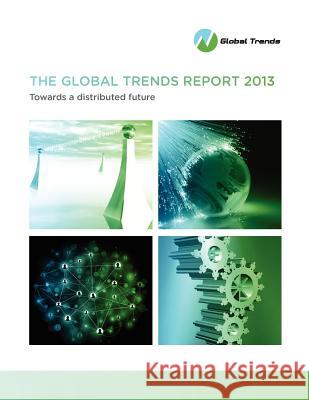The Global Trends Report 2013: Towards a Distributed Future » książka
The Global Trends Report 2013: Towards a Distributed Future
ISBN-13: 9782970084716 / Angielski / Miękka / 2012 / 137 str.
The Global Trends Report 2013: Towards a Distributed Future, is an invaluable guide to the global trends that are reshaping the world in which we will live and operate in the future. Businesses today face a significant challenge in operating in two extreme timeframes: Responding to rising short-term pressures while simultaneously preparing their organizations for fundamental longer-term changes reshaping world markets. To reconcile the "gap" between these two mindsets, it is critical to a point of view on the future to guide and shape actions today. The Global Trends Report 2013 helps leaders to translate the mass of data about how the world is changing into actions to prepare their organizations for the future today. It addresses three main topics: a) What is happening, i.e. the data; b) What are the resulting challenges and opportunities, i.e. understanding and implications; and finally, c) What are the questions you need to ask to be able to prepare for action today. An overriding theme in the GT 2013 Report is that the world is becoming more distributed, not only in terms of increasingly mobile and globally dispersed consumption, but also increasingly in terms of production, resources, knowledge and power which are increasingly managed through dispersed networks. Power is shifting from West to East, reflecting the growing power of BRICS markets; at the same time it is shifting from traditional institutions towards individuals, communities and businesses. Distributed networks and collaboration are more important than ever, not only to address global issues including resource scarcity, but also to create and capture value in a world of more demanding consumers and customers. Consumer power, aided by technology, is redefining what is value (and thus what they are willing to pay for versus commodities that are expected to be free), and increasingly reshaping whole markets and industries. So what is changing? The Global Trends Report 2013 offers insights, implications and examples on key trends in:
- Resources: What are critical resources? What trends are impacting their availability and use?
- Organizations - Communities: How is the world in which we live and operate organized?
- Shapers - Influencers: Which individuals and groups shape and influence the world in which we live and operate?
- The fight for control - access - distributed control - access: The scramble is on to secure critical resources, including raw materials and other resources. As resource competition intensifies, protectionism is rising, along with innovation to rethink the what and how of resource usage. The result: Increasing distribution of resource control.
- The fight for rules of engagement - distributed power: People and communities are making their voices heard, taking control from institutions. The impact is being felt from politics to the high street, but balancing power with trust and responsibility remains a challenge.
- The fight for value creation - capture - distributed value creation: As production and consumption become more distributed, the notion of value itself is being redefined, with growing competition for who is being commoditized and who is creating and capturing value (profit). At the same time, companies are no longer judged by profit alone, but also by purpose and contribution to society by their customers, employees and stakeholders.
- The fight for values - beliefs - values for a distributed world: Trust, values and collaboration have never been more important or more elusive, as tensions rise against a backdrop of economic and resource pressures and rising inequalities. Conscious leadership is needed to overcome short-term thinking.











